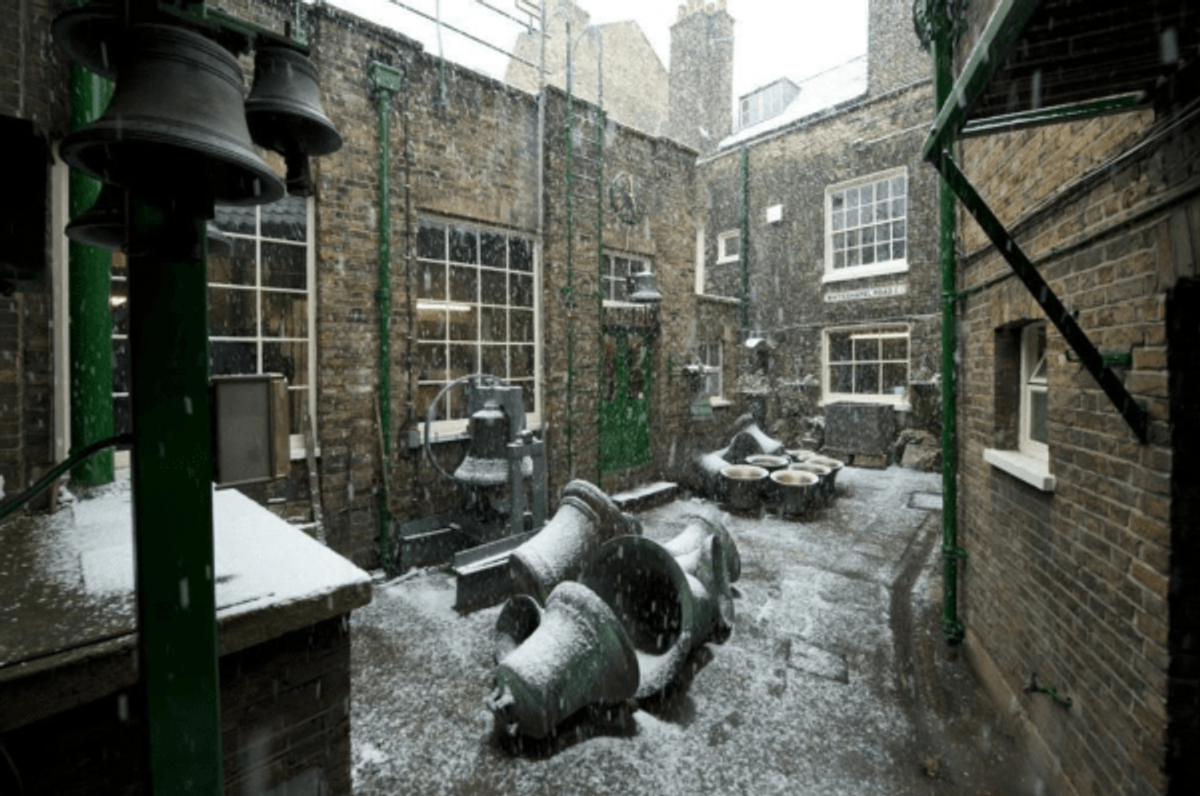On 2 December 2016, Alan and Kathryn Hughes, whose family had owned the Whitechapel Bell Foundry since 1904, announced its sale to an east London property developer, Vincent Goldstein. It felt like a fait accompli.
I live nearby and felt badly that, although I knew the buildings well, I had never been inside. Luckily, I was offered a place on a tour booked by the Friends of the Royal Academy and, on 25 February 2017, I was taken round by the foundry manager. I have been to plenty of sites of industrial archaeology, including the Gladstone Pottery Museum in Stoke-on-Trent, the Ironbridge Gorge Museum in Telford and, most memorably, Quarry Bank in Styal. But I have never previously had such an intense experience of walking straight back into the world of pre-industrial, craft production—how bells have been made since the Middle Ages.
I was certainly not alone in feeling upset about its fate. In March 2017, the United Kingdom Historic Building Preservation Trust (UKHBPT) made an offer to the Hughes family to keep the foundry in operation, following the model of the Middleport Pottery, which it developed in Stoke-on-Trent, keeping the existing system of manufacture by, on the one hand, making it more commercial and, on the other, attracting public funds to maintain the historic fabric. The trust published a letter in the Times pledging that “all the archives, fixtures and fittings would be retained in their original place”. Five thousand people signed a petition in support. The offer was turned down and the fixtures and fittings were sold in April 2017.
Meanwhile, Vincent Goldstein sold the Bell Foundry to Bippy Siegal, a New York venture capitalist with financial interests in Soho House. He commissioned 31/44 Architects, who had been employed at Redchurch Townhouse in Whitby Street, to draw up plans to turn the Bell Foundry into a hotel, demolishing all the later additions to the historic building and turning the ground floor into a café/bar.
Bizarrely, Historic England, the heritage agency with responsibility for the protection of the historic environment, chose to support this scheme on grounds of its “sensitivity” and on Thursday 14 November, Tower Hamlets planning committee, by the single casting vote of its chairman, approved their plans.
So far, this whole process has been a catastrophe for the system of protection of historic buildings and the ability of the heritage agencies to work effectively together. Historic England has washed its hands of keeping it as a foundry. Only the UKHBPT has persisted by promoting its carefully considered alternative plan.
Now, suddenly, a white knight has appeared. Robert Jenrick, the secretary of state for Planning, Communities and Local Government, realised that it would not look at all good for the Foundry—which cast the bells of Big Ben, St Paul’s and Westminster Abbey—to be half-demolished on his watch, and the other half turned into a visitor centre-cum-shrine. He has ordered Tower Hamlets to halt the process, while he considers calling the scheme in for review. There may, after all, be hope.
Charles Saumarez Smith is the chairman of the Royal Drawing School and author of East London


